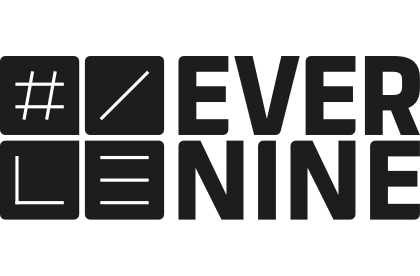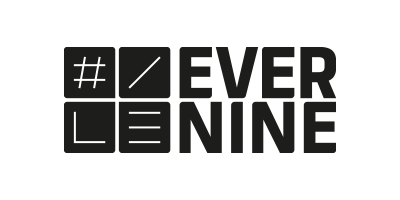
Growth Hacking: A great opportunity for B2B marketing
No matter which marketing fair you are currently attending, you can hardly escape the topic of growth hacking. It seems to be the hottest topic in marketing right now – no wonder, examples show how extreme growth hacking can boost the success of a company. Although the boom is currently more in the B2C area, the trend also has great potential for B2B companies. In this article we will show you what growth hacking is all about and how marketers from medium-sized companies can use this trend for their communication.
von Jana Walz
Jr. Communication Manager / Tech & Digitalization
How it all began: The birth of Growth Hacking
The most famous and first known growth hack is the “PS. I love you” from Hotmail. In 1996 (!) the two founders of Hotmail put a “PS. I love you. Get your free e-mail at Hotmail” under the signature. As soon as the recipient pressed the blue highlighted Hotmail, he was forwarded to the mail registration page. The measure was successful, because until then there were no triggers in the email signature: Hotmail managed to double its user base of 1 million users (after 6 months) within 5 weeks due to the growth hack. Even if this example would be difficult to implement in Germany, there are still application possibilities that can be very interesting.
Infobox: Growth Hacking
For everyone who has missed the trend: Growth Hacking is not a tool to hack someone to death, but a marketing process related to the “fail-forward strategy”. Growth hacking involves testing and optimizing as many ideas as possible to increase the growth of a company. These have to be well planned, prepared and targeted against any myth. At the heart of this process is to find measures without too much effort and as quickly as possible how a company can optimise its sales by making small adjustments. Questions like: Are Google-Ads successful? Should I adapt my website text? Sending Christmas gifts to potential customers? Or maybe a newsletter? The small “hacks” can be very simple, but they can also take up a huge amount of space.
Most examples of growth hacking can actually be found in the B2C environment. Addressing the individual target group is easier and the hacks can be applied to just about any product. BUT: It’s actually similar in the B2B environment? B2B customers are just people who want to buy something and what does a person want to be sold? A story, emotions, authenticity and benefits.
Growth Hacking: With small hacks to success
Of course, every company is already following exactly this approach in its current marketing strategy. But the question is how to optimize it with small hacks. Here are a few examples of what growth hacking for B2B companies could look like. Let’s start with a simple adjustment of the marketing strategy:
➨ Addressing individual target groups
The most important aspect of any marketing strategy is to address the right target group and, ideally, to adapt the wording to suit the group. You can get the right content for the right target group, for example, through our Qualified Lead Marketing (QLM) approach. Right from the start, the specific target groups are directly targeted with campaigns and different content. Through the different addresses and “stories”, the leads can be filtered directly, resulting in higher quality leads on which the sales team can then concentrate.
➨ Longer Coverage

Convince your target group with Native Advertising and give them the information they need. Source: Evernine.
Companies take much longer to make a purchase decision than a private customer. In addition, several instances / levels must agree to the purchase than is usual in the customer area. This makes it all the more important to remind the potential customer of the product again and again through retargeting and native advertising, for example, and to present the advantages of each level accordingly.
Two strategies go hand in hand here. Because in order to make the benefits clear to different groups of decision-makers, the story must be adapted to the respective target group: keyword QLM.
➨ Using multi-channel
In contrast to B2C marketing, it is more difficult to address the target group directly with a product or service that requires explanation. But the good news is that C-Level is also on the move in social media and the news world. The only question is: Where? First of all, you have to test and test all channels, such as social media platforms, native advertising, e-mail
B2C-Growth Hacking also works for B2B!
Besides optimizing the marketing strategy by using additional marketing tools or adapting the campaigns, Growth Hacks can also be concrete and visible for the interested party.
➨ Gift-Hacks:

With small incentives you can quickly win over your target group. Source: iStock / cnythzl.
Customers love gifts, and not only in the B2C sector, but also in companies or at decision-maker level. You can learn how to do this from B2C companies.
Example Dropbox: The file hosting service offers free additional storage space to every customer who has referred another customer. The more friends a customer has referred, the more storage space he can use.
The gift idea can easily be applied to your own portfolio. Just be careful: high investment costs can quickly arise here. So as a reward, use something you have in abundance or can offer well.
➨ Fear-of-Missing-Out-Hack:
The Fear-of-Missing-Out-Hack has probably been felt by everyone at some point. It’s one of the most popular hacks, for example on hotel comparison sites such as Booking.com. How often does it say next to the price of the hotel that there are only a limited number of rooms available or texts like: “3 other visitors are looking at this room”. The fear that the prospective customer might leave empty breaks out quickly and he strikes faster.
With B2B products this is not so easy to implement, but you have the possibility to apply this hack to your own webinar places or whitepaper downloads by including a countdown on the registration page and talking about very limited capacities. This way you increase the attractiveness of your webinar or whitepaper and perhaps encourage participation / download.
Prioritizing is the key
Before you and your team get started right now and want to test all the examples, prioritize your ideas! Because many measures sound easy to implement and not particularly elaborate, but that can be deceptive. They still say: Growth Hacking must be well planned, organized and prioritized. This can sometimes exceed the internal framework of time and capacity – but that’s no problem. More and more agencies are specializing in growth hacking. The Evernine Group is also happy to be at your side as a consultant when it comes to finding or prioritising ideas. But also the implementation of the hacks can be completely handed over to us.
The future with Growth Hacking
Through growth hacking, not only can a positive change be achieved for the individual company in sales and turnover figures, but also a progressive change in the economy. For example, if an IoT platform vendor were to use a very simple hack, such as Dropbox, to give a free security check or other service to every customer who brings a new customer on board, customers would actively recommend the IoT vendor to their corporate network to receive “gifts”. The faster the use of IoT spreads. The result: faster networking in the industry.



